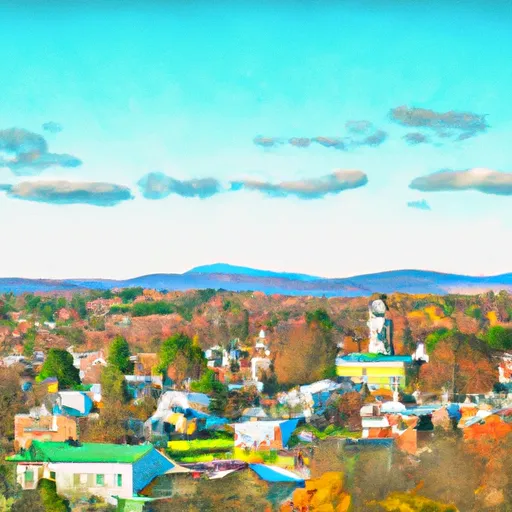-
 Snoflo Premium
Snoflo Premium
Get unlimited access to all our content
With no Ad interruptions! - Start Your Free Trial Login with existing account
Enosburg-Falls
Eden Index
Climate
7.7
•
Recreation
2.0
•
Community
2.7
•
Safeguard
4.4/10

Enosburg-Falls is a small town in Franklin County, Vermont, known for its picturesque landscapes and charming downtown area. The climate in Enosburg-Falls is characterized by long, cold winters and warm, humid summers. The town is situated near the Missisquoi River, which is an important hydrological feature of the area. The river provides opportunities for fishing, kayaking, and other outdoor activities. Additionally, Enosburg-Falls is surrounded by several parks and forests, including the Green Mountain National Forest, which offer hiking, camping, and wildlife viewing opportunities. Overall, Enosburg-Falls is a great destination for those who enjoy outdoor recreation in a peaceful, natural setting.
What is the Eden Index?
The Snoflo Eden Index serves as a comprehensive rating system for regions, evaluating their desirability through a holistic assessment of climate health, outdoor recreation opportunities, and natural disaster risk, acknowledging the profound impact of these factors on livability and well-being.
Climate Health Indicator (CHI): 7.7
Enosburg-Falls receives approximately
1117mm of rain per year,
with humidity levels near 78%
and air temperatures averaging around
7°C.
Enosburg-Falls has a plant hardyness factor of
4, meaning
plants and agriculture in this region thrive during a short period during spring and early summer. Most
plants will die off during the colder winter months.
By considering the ideal temperature range, reliable water supplies, clean air, and stable seasonal rain or snowpacks, the Climate Health Indicator (CHI) underscores the significance of a healthy climate as the foundation for quality living.
A healthy climate is paramount for ensuring a high quality of life and livability in a region, fostering both physical well-being and environmental harmony. This can be characterized by ideal temperatures, reliable access to water supplies, clean air, and consistent seasonal rain or snowpacks.
Weather Forecast
Streamflow Conditions
Richelieu
Area Rivers
Richelieu
Snowpack Depths
Richelieu
Reservoir Storage Capacity
Richelieu
Groundwater Levels
Recreational Opportunity Index (ROI): 2.0
The Recreational Opportunity Index (ROI) recognizes the value of outdoor recreational options, such as parks, hiking trails, camping sites, and fishing spots, while acknowledging that climate plays a pivotal role in ensuring the comfort and consistency of these experiences.
Access to outdoor recreational opportunities, encompassing activities such as parks, hiking, camping, and fishing, is crucial for overall well-being, and the climate plays a pivotal role in enabling and enhancing these experiences, ensuring that individuals can engage in nature-based activities comfortably and consistently.
Camping Areas
| Campground | Campsites | Reservations | Toilets | Showers | Elevation |
|---|---|---|---|---|---|
| Little River State Park | 100 | 731 ft | |||
| Smugglers Notch State Park | 34 | 1,934 ft | |||
| Carmi State Park | None | 493 ft | |||
| Underhill State Park | None | 1,969 ft | |||
| Parc National de la Yamaska | 149 | 491 ft |
Nearby Ski Areas
Catastrophe Safeguard Index (CSI):
The Catastrophe Safeguard Index (CSI) recognizes that natural disaster risk, encompassing floods, fires, hurricanes, and tornadoes, can drastically affect safety and the overall appeal of an area.
The level of natural disaster risk in a region significantly affects safety and the overall livability, with climate change amplifying these risks by potentially increasing the frequency and intensity of events like floods, fires, hurricanes, and tornadoes, thereby posing substantial challenges to community resilience and well-being.
Community Resilience Indicator (CRI): 2.7
The Community Resilience Indicator (CRI) recognizes that education, healthcare, and socioeconomics are crucial to the well-being of a region. The CRI acknowledges the profound impact of these elements on residents' overall quality of life. By evaluating educational resources, healthcare accessibility, and economic inclusivity, the index captures the essential aspects that contribute to a thriving community, fostering resident satisfaction, equity, and social cohesion.

